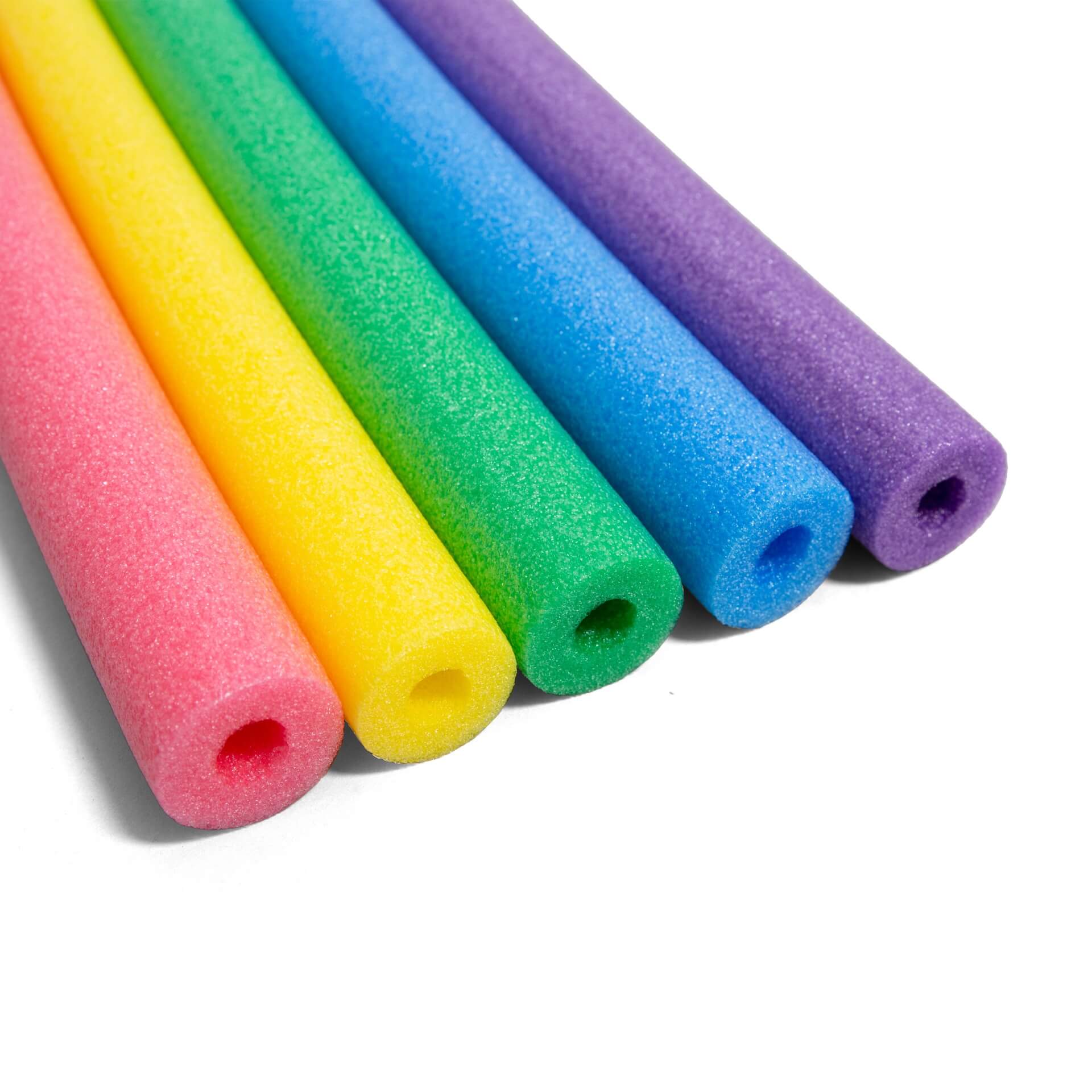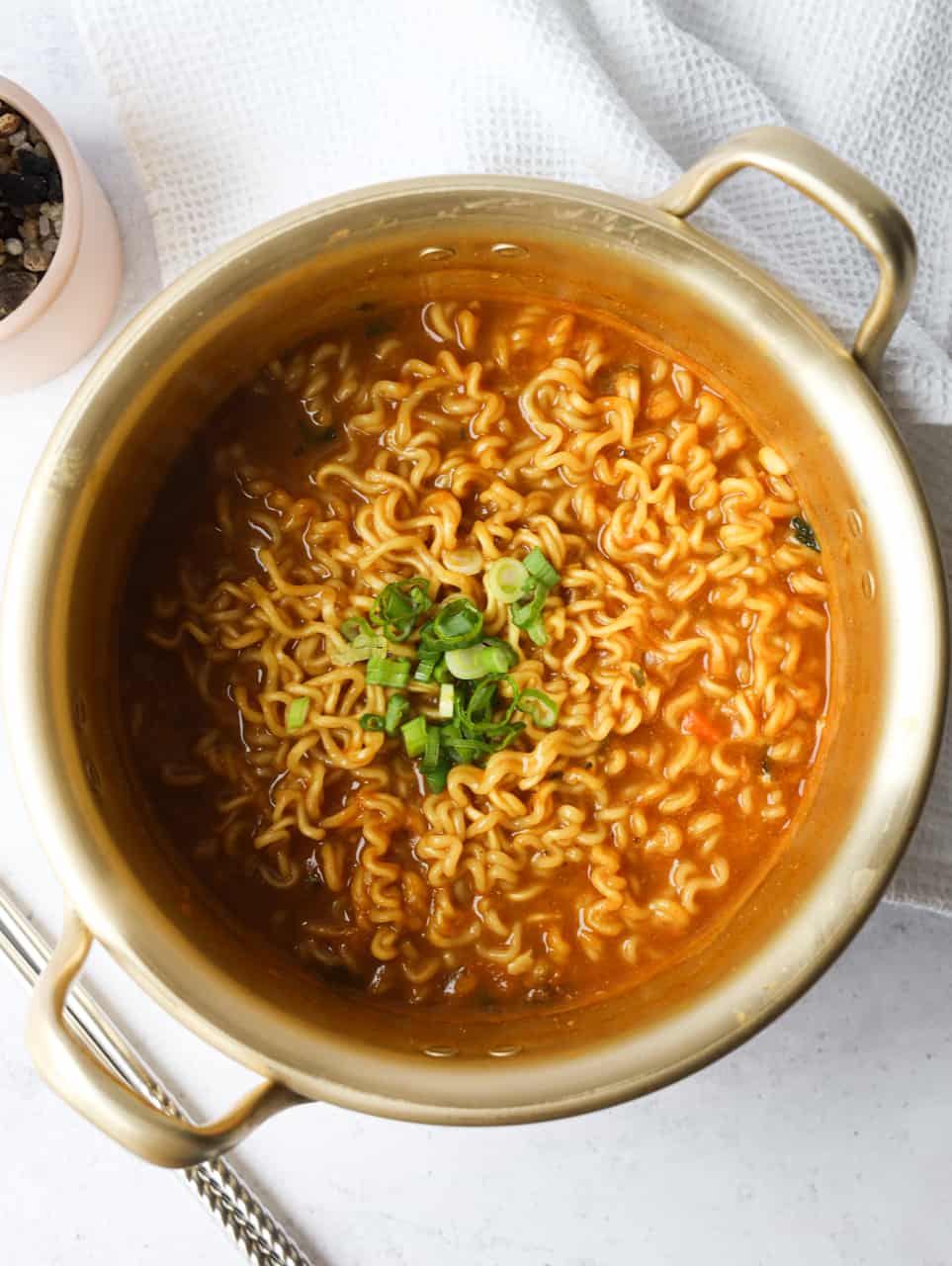

Articles
How To Store Fresh Noodles
Modified: August 17, 2024
Looking for articles on how to store fresh noodles? Check out our comprehensive guide for expert tips and tricks to keep your noodles fresh for longer.
(Many of the links in this article redirect to a specific reviewed product. Your purchase of these products through affiliate links helps to generate commission for Storables.com, at no extra cost. Learn more)
Introduction
Nothing beats the taste of fresh noodles, whether you’re enjoying a delicious bowl of ramen or savoring a plate of homemade pasta. But what if you have more noodles than you can consume in one sitting? It’s essential to store fresh noodles properly to maintain their texture and flavor, maximizing their shelf life and minimizing waste.
In this article, we will explore the best ways to store fresh noodles, whether you’re dealing with store-bought options or your own homemade creations. We’ll delve into the nuances of refrigerating and freezing fresh noodles, as well as provide tips on storing cooked noodles to prevent them from turning mushy. By following these guidelines, you can ensure that your noodles stay fresh and enjoyable for as long as possible.
Key Takeaways:
- Properly storing fresh noodles is crucial for preserving their flavor and texture. Whether refrigerating or freezing, follow the right techniques to maximize shelf life and minimize waste.
- Understanding the differences between noodle types and proper storage methods can help you enjoy delicious meals without wasting food. From cooling to labeling, follow these tips for fresh noodle success!
Read more: How To Store Fresh Rice Noodles
Choosing the Right Noodles
Before we dive into the storage process, it’s crucial to start with the right type of noodles. Different types of noodles have varying textures and ingredients, which affect their shelf life and storage requirements.
If you’re purchasing fresh noodles from a store, be sure to check the expiration date. Choose a package with a later expiration date to give yourself more time to consume the noodles. Additionally, opt for noodles that are well-packaged and free from any signs of spoilage.
If you’re making your own fresh noodles, consider the ingredients used and their moisture content. Egg-based noodles, such as pasta, tend to have a shorter shelf life compared to flour-based ones. Keep this in mind when planning your cooking and storage schedule.
Remember, it’s best to use freshly made noodles whenever possible. While storing fresh noodles is convenient, they are always at their prime when consumed immediately after preparation.
Storing Fresh Noodles in the Refrigerator
If you have leftover fresh noodles or want to prepare them in advance, storing them in the refrigerator is a great option. Here’s how to do it:
- First, ensure that the noodles have cooled down completely. You can spread them out on a baking sheet or tray to speed up the cooling process.
- Next, transfer the noodles to an airtight container or a resealable plastic bag. Make sure there is enough space for the noodles to move around without getting squished.
- Before sealing the container or bag, consider adding a light dusting of flour or cornstarch to prevent the noodles from sticking together.
- Label the container or bag with the date of storage to keep track of its freshness.
- Finally, place the noodles in the refrigerator, preferably on a shelf rather than in the door. The stable temperature inside the refrigerator will help maintain the noodles’ quality.
When stored properly, fresh noodles can typically be kept in the refrigerator for up to three to five days. However, it’s important to note that the texture of the noodles may change slightly over time, becoming slightly softer or more brittle. Fresh noodles are best consumed within the first couple of days for optimal taste and texture.
Freezing Fresh Noodles
Freezing fresh noodles is a fantastic option if you want to extend their shelf life even further. Freezing helps preserve the texture and flavor of the noodles, allowing you to enjoy them at a later time. Here’s how to freeze fresh noodles:
- Prepare the fresh noodles as you normally would, whether you’ve made them from scratch or purchased them from the store.
- While the noodles are still fresh, dust them lightly with flour or cornstarch. This will prevent them from sticking together during the freezing process.
- Divide the noodles into portion sizes that best suit your needs. This will make it easier to thaw only the amount you require later on.
- Place the individual portions of noodles into airtight freezer bags or freezer-safe containers. Make sure to remove as much air as possible from the bags or containers before sealing them. This will help prevent freezer burn and maintain the quality of the noodles.
- Label the bags or containers with the current date for reference.
- Put the noodles in the freezer, ideally laying them flat to ensure they freeze more quickly and evenly.
Frozen fresh noodles can last for up to three months in the freezer. However, it’s essential to note that the texture may slightly change after thawing. The noodles may become softer or slightly chewier. Nevertheless, they will still be enjoyable to eat, especially when incorporated into a delicious dish.
After cooking fresh noodles, toss them in a bit of oil to prevent sticking, then store them in an airtight container in the refrigerator for up to 3 days.
Reheating and Using Frozen Noodles
When it comes time to use your frozen noodles, it’s important to thaw and reheat them properly to maintain their texture and flavor. Here’s how to do it:
- Transfer the frozen noodles from the freezer to the refrigerator. Allow them to thaw overnight or for about 6-8 hours. Thawing them gradually in the refrigerator will help preserve their quality.
- Once thawed, you can reheat the noodles using several methods. One popular option is to bring a pot of water to boil and then add the noodles. Cook the noodles for a brief period of time, just until they are heated through. Be careful not to overcook them, as this can lead to a mushy texture.
- If you prefer, you can also microwave the thawed noodles. Place them in a microwave-safe dish and cover it with a damp paper towel or microwave-safe lid. Heat the noodles in short intervals, stirring in between, until they are heated to your desired temperature.
- Once your noodles are reheated, rinse them briefly with cold water to halt the cooking process and remove any excess starch. This step is especially important for pasta noodles, as it helps prevent them from becoming sticky and clumping together.
Now that your noodles are reheated, you can use them in various dishes. Whether you’re tossing them in a flavorful sauce, adding them to soups or stir-fries, or incorporating them into a noodle salad, frozen noodles can be a convenient and delicious addition to your meals.
Note that reheated frozen noodles may have a slightly softer texture than freshly cooked ones, but their taste and versatility remain intact. Enjoy experimenting with different recipes and flavor combinations to make the most of your thawed noodles!
Read more: How To Store Spaghetti Noodles
Storing Cooked Noodles
If you have leftover cooked noodles and want to store them for future use, there are a few things to keep in mind to ensure they stay fresh and tasty. Here’s how to store cooked noodles:
- Allow the cooked noodles to cool down completely at room temperature. It’s important that they are no longer hot before storing them to avoid condensation and moisture buildup.
- Transfer the cooled noodles to an airtight container or resealable plastic bag. Ensure that the container or bag is clean and dry to prevent any potential contamination.
- If the noodles are sticky or prone to clumping, add a small amount of oil to them. Toss the noodles gently to coat them evenly, which will help prevent them from sticking together.
- Label the container or bag with the date of storage to keep track of how long they have been stored.
- Place the container or bag in the refrigerator, ideally on a shelf. Cooked noodles stored in the fridge can usually last for up to three to five days.
When you’re ready to use the stored cooked noodles, you can reheat them using a few different methods. One option is to briefly submerge the noodles in boiling water for a few seconds, just until they are heated through. Alternatively, you can microwave them or stir-fry them with other ingredients for a quick and easy meal.
Remember, the texture of cooked noodles may change slightly after storage. They could become slightly softer or more tender. However, with proper storage and reheating techniques, you can still enjoy the delicious taste of your cooked noodles even after they have been stored.
Tips for Prolonging Fresh Noodle Shelf Life
To ensure that your fresh noodles stay delicious and maintain their quality for as long as possible, consider the following tips:
- Store fresh noodles in the refrigerator as soon as possible. The longer they sit at room temperature, the quicker they can spoil.
- If you’re buying store-bought fresh noodles, check the expiration date and choose the freshest option available.
- Keep an eye on the appearance and smell of the noodles. If you notice any signs of mold, discoloration, or a sour odor, discard them immediately.
- When handling fresh noodles, use clean utensils and hands to prevent contamination.
- If you have leftover cooked noodles, store them separately from the sauce or other ingredients to maintain their texture.
- If you plan to store cooked noodles, slightly undercook them by a minute or two to prevent them from becoming too soft during storage and reheating.
- When storing fresh noodles in the refrigerator or freezer, make sure they are in a well-sealed, airtight container or bag to prevent moisture and air exposure.
- Don’t overcrowd the container or bag when storing fresh noodles. Give them some space to avoid clumping or squishing.
- Consider portioning the noodles before storing them, allowing you to thaw or reheat only the amount you need, reducing waste.
- If you’re freezing fresh noodles, label the bags or containers with the date of storage for easy reference.
- When reheating frozen or refrigerated noodles, be mindful not to overcook them to avoid a mushy texture.
- Experiment with different recipes and incorporate stored fresh noodles into a variety of dishes to make the most of their shelf life.
By following these tips, you can maximize the shelf life of your fresh noodles and enjoy their delicious taste and texture for longer periods. Whether you’re storing store-bought noodles or homemade creations, proper storage and handling techniques can make a significant difference in preserving the quality of your noodles.
Conclusion
Properly storing fresh noodles is essential for preserving their flavor, texture, and shelf life. Whether you’ve made your own homemade noodles or purchased them from the store, following the right storage techniques can help you enjoy delicious meals without wasting food.
From refrigerating leftover noodles to freezing them for later use, there are various options to choose from depending on your needs. When storing fresh noodles, remember to cool them down completely before transferring them to airtight containers or bags. Adding a light dusting of flour or cornstarch can help prevent sticking, and labeling the containers with the storage date is crucial for keeping track of freshness.
Additionally, understanding the differences between various types of noodles, such as egg-based or flour-based, can guide you in choosing the best storage method and optimizing their shelf life. Fresh noodles can typically be refrigerated for a few days, while freezing them extends their lifespan for up to three months.
When it’s time to use your stored noodles, proper thawing and reheating techniques are key to maintaining their quality. Whether you choose to boil, microwave, or stir-fry them, avoid overcooking to prevent a mushy texture. Rinse cooked noodles briefly with cold water after reheating to remove any excess starch and prevent clumping.
Remember to store cooked noodles separately from sauces or other ingredients to maintain their texture, and when handling fresh noodles, always use clean utensils and hands to prevent contamination.
With these tips in mind, you can prolong the shelf life of fresh noodles, reduce food waste, and enjoy delicious meals whenever you’re craving a taste of properly stored goodness. So don’t hesitate to stock up, experiment with different recipes, and savor the satisfaction of having fresh noodles at your fingertips!
Frequently Asked Questions about How To Store Fresh Noodles
Was this page helpful?
At Storables.com, we guarantee accurate and reliable information. Our content, validated by Expert Board Contributors, is crafted following stringent Editorial Policies. We're committed to providing you with well-researched, expert-backed insights for all your informational needs.















0 thoughts on “How To Store Fresh Noodles”